Verdi: Les Vêpres Siciliennes (Carignani)
Introduction
Les vêpres siciliennes (The Sicilian Vespers) or its later Italian language version, I vespri siciliani (but not before it needed to be renamed Giovanna di Guzman for reasons of getting around pre-unification Italian sensitivities) did not have the easiest start in life. The libretto had already been either turned down or only partially 'composed' before it was rewritten under the pretence that it was the original story Verdi had demanded for his second major work at the Paris Opera.The first version of Eugène Scribe and Charles Duveryrier's libretto was set in the Netherlands and dealt with the Spanish oppression of that country. Their 'updated' work transported the story to Sicily in 1282, a country which was then being brutally oppressed by France. The 'Sicilian vespers' of the title recall the Sicilian uprising, signalled by the ringing of the church bells for Vespers, and which resulted in the slaughter of over 3000 men, women and children.
There was obviously going to be a little tension by reminding the French that their history as a great European country was bathed in blood (especially only 60 or so years after the Revolution), but it was a fairly reasonable success with favourable reviews by more established composers such as Berlioz who by 1854, was the grand old man of Western music.
The Italian version created a few years later, yet still pre-1861 was set in Portugal, and it was only until Italy had been mostly reunited that the perhaps more familiar I vespri siciliani really took hold, yet, since then has become one of Verdi's least performed major works.
Back almost 600 years however, a brief synopsis follows:
Before the opera begins, some 'historical' knowledge is needed. Guy de Montfort, the governor of Sicily, had many years earlier, raped a young woman. Unbeknown to him, she had a son, who has joined the Sicilian resistance. The resistance has taken heart by those around the Duchess Hélène and her brother the Austrian Duke Frédéric and so a rebellion is on the cards. de Montfort needs to make clear who's boss, and has Frédéric publicly executed.
Act 1
The French are drunk, and celebrating during the anniversary of Frédéric's death, which is being remembered more solemnly by the Sicilians. Hélène is 'persuaded' by the French to sing them a song. She uses the opportunity to stir up some much-needed patriotism, but the Sicilians back off pretty quickly when de Montfort makes an appearance. He's not known for his mercy when it comes to any hint of an uprising. De Montfort notices a young lad, Henri, amongst the crowd and asks him who he is. Henri says he doesn't know his father, but after his mother died, she left him udner the protection of Frédéric. De Montfort warns him not to become too familiar with suspected enemies of the state such as Hélène, but Henri isn't impressed by the veiled threat.
Act II
Procida, a doctor and a major player in the resistance, has returned after a while in exile. He forms a new alliance with Hélène and Henri, planning an immediate surprise assault on the French while they are all drunk at a mass Sicilian wedding. Hélène's one aim in life is to avenge her brother, and Henri is willing to do anything for her. They both swear allegiance to the cause and to each other.
De Montfort orders Henri's presence at the palace just before the planned attack, but down to the Sicilian reticence when all the brides are abducted and humiliated by the French soldiers, this is an abject failure.
Act III
De Montfort and Henri meet, and Henri is told that he is his father. Henri has already promised to try to kill him, but is now torn between murdering the man he hates and losing the woman he loves.
Act IV
Hélène, Procida and the rest of the conspirators are in prison, awaiting execution. Henri vists Hélène and explains his predicament, which Hélène understands and forgives.
Procida is executed first, but just before it is Hélène's turn, Henri publicly address de Montfort as 'father'. This is the signal for de Montfort to announce a general amnesty and the marriage of his 'French' son to a Sicilian Duchess.
Act V
Things appear to be going well for the couple, but Hélène is still confronted by the 'ghosts' of her brother and Procida. She still has a duty to perform, and when she discovers the Sicilians are planning another attack at the sound of the Vespers bells she realises that she can't, or won't stop the forces of nature that will destroy her new life and family.
At least, it is all supposed to be set in the late 13th century. This, however, is a Christof Loy production, and so the whole story appears to have been moved to the 1940s, in which the French conquerors are all dressed in suits and ties and the Sicilians in 'casual' gear. Hélène, the Sicilian Duchess, is also dressed in a suit. The reasons behind this is not explained - but then not much about the production is.
The whole thing opens up with the chorus walking onstage to the orchestra tuning up, and then launching straight into the first chorus.
'What about the Overture?!', I imagine I hear you ask. Well, it's placed in between Acts I and II of course (!), during which we see what appear to be living posters of wanted, or dead insurgents. These images blink, very cleverly become their childhood selves, at which point they are all smiling, and then quickly revert to becoming adults again with disturbingly 'oppressed' looks. It's all very slow and hypnotic and annoyingly, distracts from the music.
There is also a very strange moment towards the end of Act II when the Sicilian brides are ritually humiliated by being forced to strip and crawl across broken glass. The music suddenly stops halfway through a chorus for this! Why?! It's a hugely awkward scene in many ways, and when a 'refuser' has her throat slit quite graphically by de Montfort you can only think that Loy has lost the plot.
It's nice to have a version of the 'Four Seasons' ballet music included between Acts III and IV. This was something the original French audiences would have insisted upon and so it seems right to include it, although with Loy's hand it becomes more embarrassing than uplifting. We are taken into Henri's mind where he imagines a happy childhood with himself, Hélène and Frédéric playing in his mother's kitchen. It's more of a 'Blue Remembered Hills' episode in which grown dancers play the part of the children. Games of 'mums and dads' are played out, with comedy baguette and spaghetti moments (well, it is Italy after all) and slightly disturbing sexual thrills displayed by his mother when she is 'seduced' by a young de Montfort.
The dance is well executed, but the steps are lumbering and awkward (much like childhood dancing), and overall it's an uninteresting scene which, yet again, doesn't explain anything. The outburst of 'That's my sister!' (in Dutch) by Frédéric when Henri takes more than a casual interest in her could easily have been translated into Italian, but it's just a small example of the lack of care put in to the whole process.
The Act IV executions are also odd. Instead of the beheadings suggested by the libretto (…'axe in hand!'), Hélène and Procida are strapped to beds in preparation for lethal injections into their necks, and the final 'massacre' is simply shown as de Montfort having his own throat cut as he did with the poor girl earlier on.
Oh dear.
Sound & Vision
Visually, there is little to complain about. It's a clean recording with all variations of light and dark carried over naturally, and colours (where there are any - mostly blood hued) are striking.The sound is more troubled. The balance between pit and stage is fairly equal, which means that at many points of the opera there is no specific bias towards either, and so everything becomes a little bland. Stage mics pick out everything very clearly, including some more 'shouty' chorus members at the end of Act III when they approach the front, but when there are some sudden head movements with sound being directed elsewhere there can be a tendency to lose much of the clarity. Quite often, this means that when Barbara Haveman (Hélène), for example, is singing within her lower range the notes disappear.
Extras
A reasonably fun 23 minute 'life in the chorus' featurette, beginning with our guide singing his part in the shower. It took me a while to realise who it was, although I never worked out why it began in this way. It's something we rarely get to hear about in DVD extras and so is a welcome change to the usual talking heads.Conclusion
So, is there anything actually worthwhile about this disc? Well yes, the music itself is extremely enjoyable for the most part (directorial oddities notwithstanding). The chorus of the Netherlands Opera are excellent, with only one or two moments of dragging, but the energy they project is infectious. Martin Wright's work has certainly paid dividends.In the pit, Paolo Carignani moves things along well enough, and when the sound levels allow, the orchestral sound appears clean and tight with only a couple os notable exceptions in the execution scene (one violin doesn't quite play the chromatic movement with everyone else) and right at the beginning of the fifth act, when the opening scale goes horribly awry.
Back on stage, the four main roles are securely delivered.
Barbara Haveman sounds a little strained at times, but this one of Verdi's most difficult female roles (out of many) and she shows off some great musicality over the huge range demanded of her. The Bolero ("Mercè dillette amiche") in Act V is very impressive considering what she has had to sing throughout the rest of the work, but the highlight for me is her astonishing account of her aria at the beginning of Act IV, just about matched by Burkhard Fritz (Henri), although he has trouble with the triplets in his own section within the same scene.
Overall though, Fritz is the most consistent of the soloists, and has a fine, open italianate sound (even with the French pronunciation getting in the way).
As for pronunciation, you don't get much more effort in 'sounding French' than from Alejandro Marco-Buhrmester (de Montfort). Sometimes, it actually gets in the way of the notes, between which he often slides quite slowly, but when the part needs a more declamatory sound, he is just the man for the job.
Balint Szabo (Procida) has a effective, almost mad look of the freedom fighter about him, and his powerful voice is very effective when 'spooking' Hélène towards the end, but his movements are a bit on the wooden side.
This is a work I previously only knew through a couple of old recordings (of the Italian version without the ballet) and so it was great to, at the very least, have the opportunity to see the original at last. Unfortunately, the production itself is a non-starter, and so you would be much better off finding your way to the Muti / La Scala DVD and also hope for some more adventurous companies to put the work on live, as it would be a great injustice if it remained in relative obscurity.
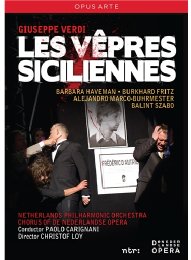
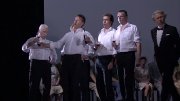
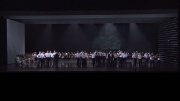
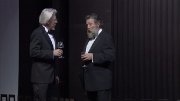
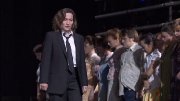
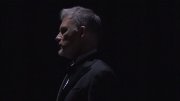

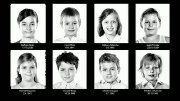
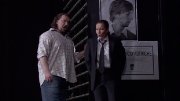
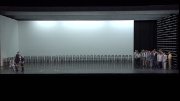
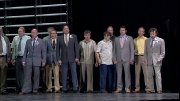

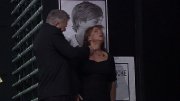


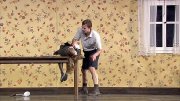

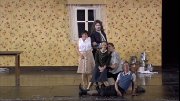
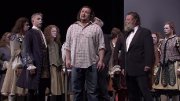
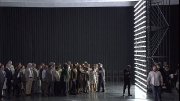
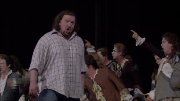


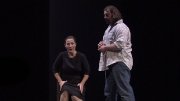


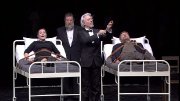
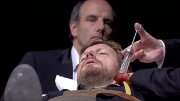
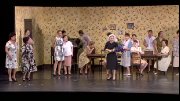


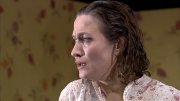
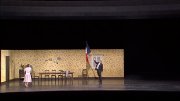
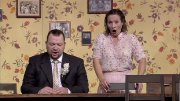
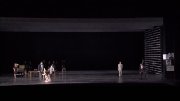

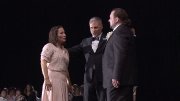
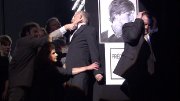


































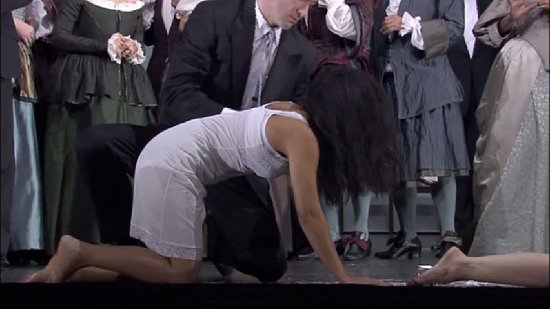



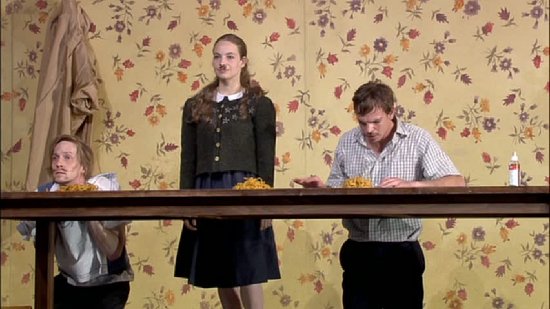





Your Opinions and Comments
Be the first to post a comment!